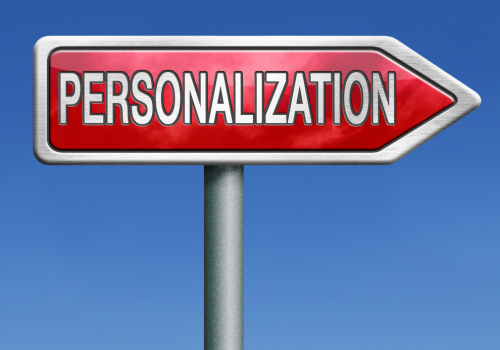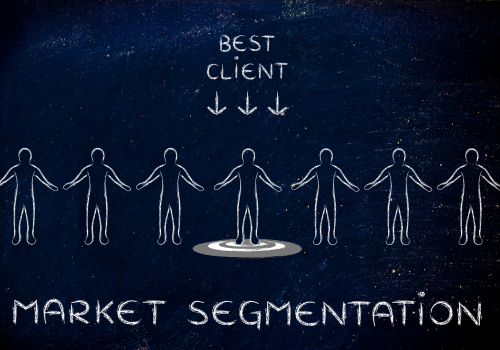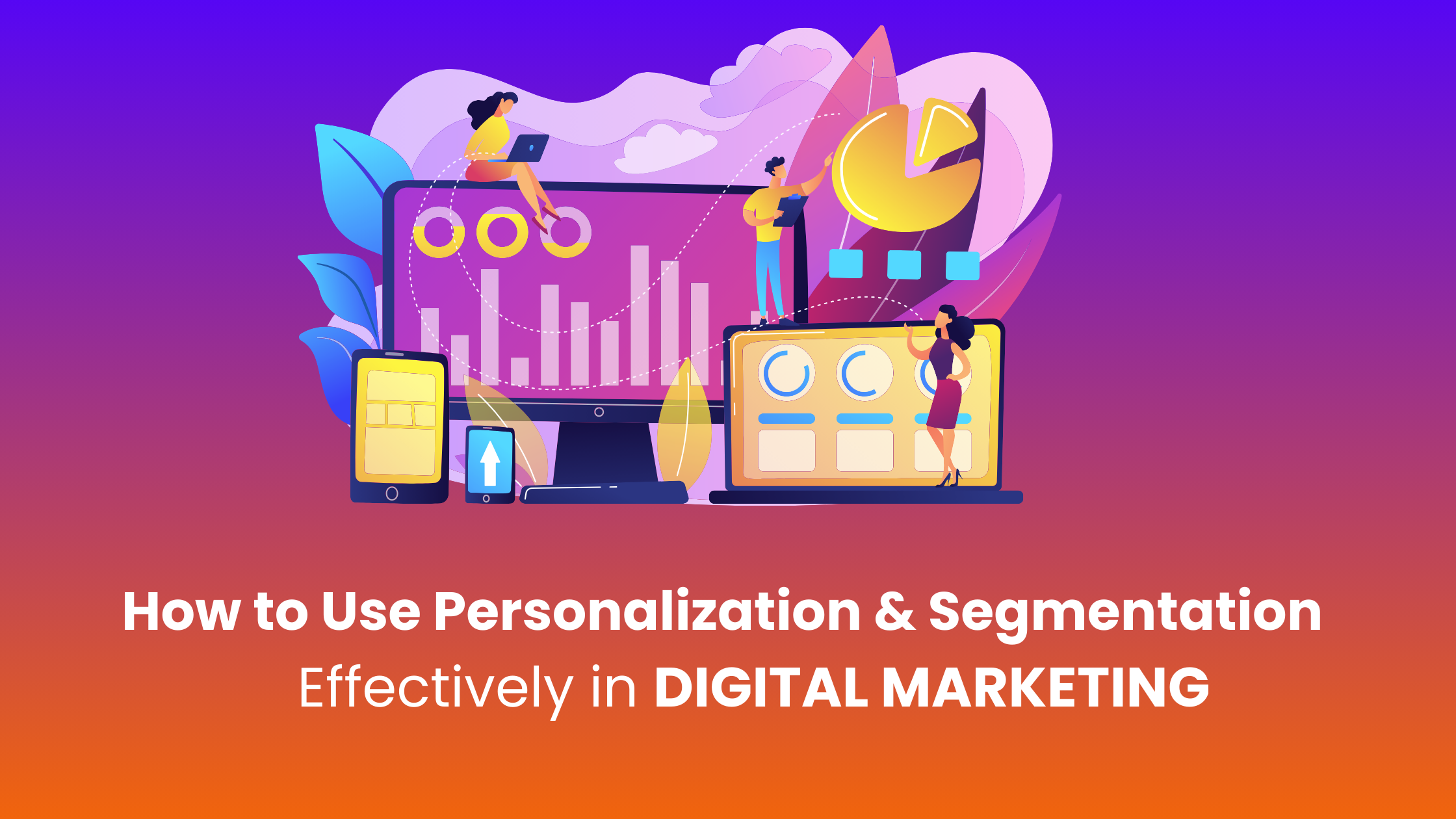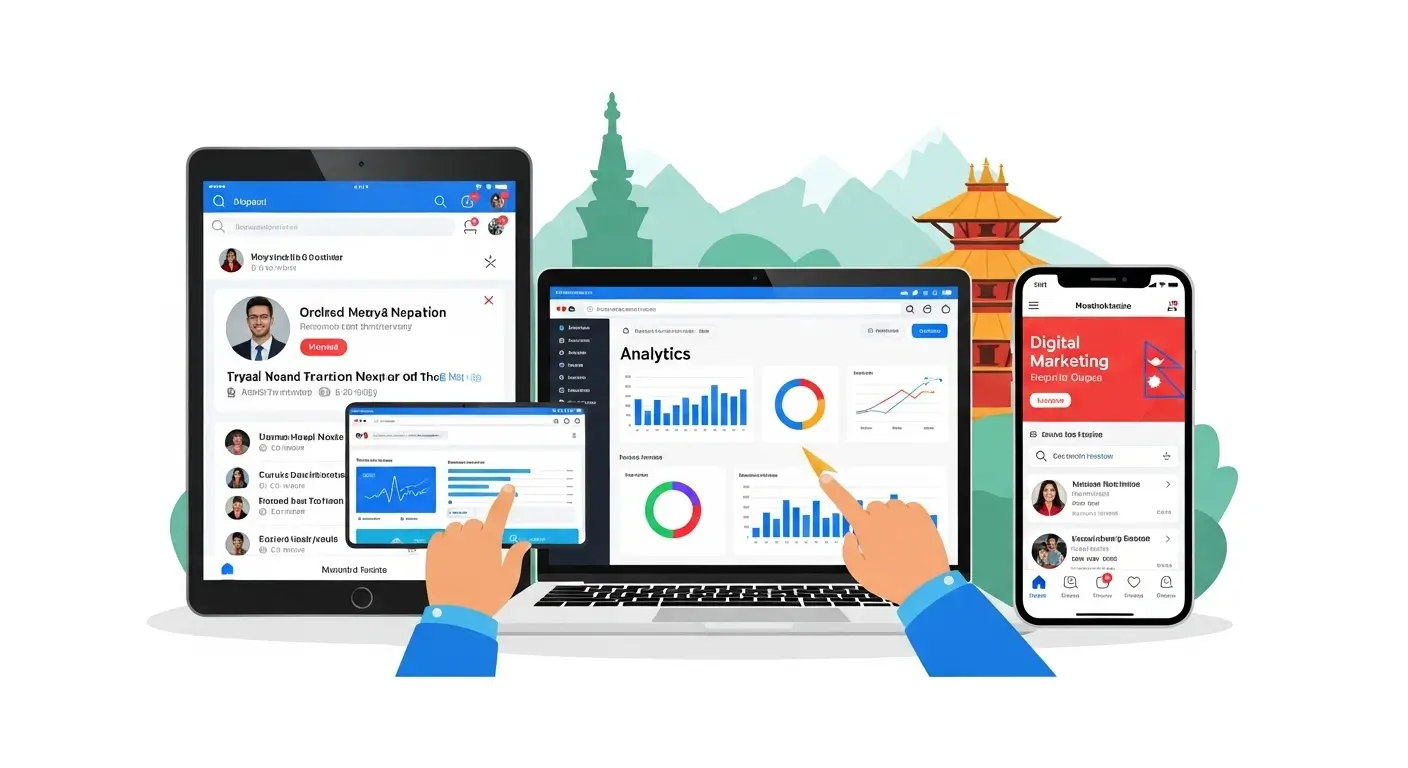Personalisation and segmentation are two key concepts in digital marketing that can increase customer engagement and conversion rates. Personalisation is the process of customising content or experiences based on the user’s preferences, behaviour, or past interactions. It’s like a digital version of one-on-one customer service. By providing personalised content, businesses can make customers feel valued and understood, thereby increasing loyalty and improving the user experience.
Segmentation is the process of dividing your audience into smaller and more homogeneous groups based on certain criteria, such as demographics, psychographics, behaviour, or needs.
Segmentation allows companies to focus their resources on the most profitable markets, thus increasing profitability and return on investment. The importance of personalisation and segmentation in digital marketing cannot be overstated.
Personalisation and segmentation are not just buzzwords in digital marketing. These are powerful strategies that can increase business growth and customer satisfaction. By understanding and implementing these strategies, companies can stay ahead in the competitive digital environment.
Understanding Personalization

Personalisation is a powerful and effective way to connect with and influence users. By understanding and applying the principles of personalisation, businesses can create and deliver content and experiences that are tailored and relevant to each user.
To implement personalisation, businesses need to consider two main aspects: tailoring content and experiences, and utilising data for personalisation.
Tailoring content and experiences means creating and delivering content and experiences that match the user’s preferences, needs, and goals. This can include:
- Using the user’s name, location, language, and other personal details to greet and communicate with them.
- Offering the user products, services, or recommendations that suit their interests, tastes, and behaviours.
- Providing the user with content and experiences that are relevant to their context, such as time, device, channel, or stage of the customer journey.
- Allowing the user to customise and control their content and experiences, such as choosing their preferred layout, theme, or settings.
Utilising data for personalisation means collecting and analysing data about the user and their interactions with the business. This can include:
- Gathering data from various sources, such as web analytics, customer relationship management (CRM), social media, surveys, and feedback.
- Segmenting and profiling the user based on their demographics, psychographics, and behavioural data.
- Applying data-driven techniques, such as artificial intelligence (AI), machine learning (ML), and natural language processing (NLP), to generate insights and predictions about the user and their needs.
- Testing and optimising the content and experiences based on the data and the user’s response.
The Role of Segmentation

Segmentation has two main roles: dividing your audience and targeting specific groups.
Dividing your audience means identifying and separating the different segments of your audience based on their characteristics and preferences. This can help you:
- Gain insights and knowledge about your audience, such as who they are, what they want, and how they behave.
- Identify and prioritise the most valuable and profitable segments of your audience, such as loyal customers, potential customers, or niche markets.
- Evaluate and compare the performance and potential of different segments of your audience, such as satisfaction, retention, conversion, or revenue.
Targeting specific groups means creating and delivering content and experiences that are tailored and suited to each segment of your audience. This can help you:
- Attract and engage your audience with content and experiences that are relevant and interesting to them, such as products, services, offers, or messages.
- Influence and persuade your audience with content and experiences that are appealing and convincing to them, such as benefits, features, or testimonials.
- Satisfy and delight your audience with content and experiences that are satisfying and exceed their expectations, such as quality, value, or service.
Benefits of Personalisation and Segmentation
In today’s digital age, businesses are constantly seeking ways to connect with their customers on a deeper level. Two powerful strategies that can significantly impact customer satisfaction and business success are “personalisation” and “segmentation.
Improved Customer Experience:
Personalisation tailors interactions to individual preferences. When customers feel like a brand understands their needs, they’re more likely to engage and stay loyal. Here’s how personalisation enhances the customer experience:
- Customised Content: By analysing user behaviour, businesses can deliver relevant content. Imagine receiving product recommendations based on your past purchases or browsing history—it feels like the brand truly knows you.
- Timely Communication: Personalised emails, notifications, and offers arrive at the right moment. Whether it’s a birthday discount or a reminder about abandoned items in your cart, these personalised touches make a difference.
Higher Conversion Rates
Segmentation involves dividing your audience into smaller, targeted groups. Here’s why it matters:
- Precise Targeting: Instead of casting a wide net, segmentation allows you to focus on specific customer segments. For instance, a clothing store might create separate campaigns for men, women, and kids. This precision leads to better results.
- Tailored Offers: Segmented audiences receive offers that resonate with their interests. If you’re a fitness enthusiast, you’ll appreciate promotions related to workout gear rather than unrelated products.
Enhanced Customer Loyalty
When customers feel valued, they become loyal advocates. Personalisation and segmentation contribute to this loyalty.
- Repeat Purchases: Personalised experiences encourage repeat business. A coffee shop remembering your favourite order or an online store offering loyalty rewards keeps you coming back.
- Word of Mouth: Satisfied customers share their positive experiences with friends and family. Word-of-mouth is a powerful marketing tool, and personalised interactions fuel it.
Implementing Personalisation and Segmentation in Email Marketing
Implementing personalisation and segmentation in email marketing can significantly enhance your engagement rates and conversions.
Customising Email Content
Personalisation in email marketing involves customising the content to match the recipient’s preferences and behaviour. This could be as simple as addressing the recipient by their first name or as complex as tailoring the entire email content based on their past interactions with your brand. For instance, if a customer has recently purchased a laptop from your online store, you might send them an email with personalised recommendations for laptop accessories.
Customising email content makes your emails more relevant and engaging, which can lead to higher open rates, click-through rates, and conversions.
Creating Segmented Email Lists
Segmentation in email marketing involves dividing your email list into distinct groups or segments based on certain criteria, such as demographics, purchase history, or engagement level.
For example, you might create a segment of customers who have made a purchase in the last 30 days and send them a special thank-you email with a discount code for their next purchase. Or, you might create a segment of subscribers who haven’t opened any of your emails in the last six months and send them a re-engagement email to try to win them back. Segmenting your email list allows you to send more targeted and relevant emails, which can improve your engagement rates and ROI.
Personalisation and Segmentation in Social Media Marketing

Personalisation and segmentation are key strategies in social media marketing that can significantly enhance your engagement and conversion rates.
Targeted Ads
Personalisation in social media marketing often involves targeted ads. These are advertisements that are tailored to the individual’s interests, behaviours, and demographics. For instance, a fashion brand might show ads for women’s clothing to female users, or a music streaming service might show ads for a rock concert to users who have listened to rock music.
Targeted ads are more relevant and engaging than generic ads, leading to higher click-through rates and conversions. They also provide a better user experience, as users are shown ads that are likely to be of interest to them.
Tailored Content for Different Audiences
Segmentation in social media marketing involves creating different content for different audience segments. This could involve posting different types of content on different social media platforms or tailoring the content of your posts to the interests and needs of different audience segments.
For example, a health and wellness brand might post workout tips on Instagram, where their younger audience is most active, and health articles on Facebook, where their older audience is most active. Or, a tech company might post technical articles for their tech-savvy audience segment and more general tech news for their less tech-savvy audience segment.
Tailoring your content to different audiences allows you to engage more effectively with each segment, leading to higher engagement rates and a stronger connection with your audience.
Website Personalisation and Segmentation
Website personalisation and segmentation are key strategies in digital marketing that can significantly enhance user engagement and conversion rates.
Dynamic Content
Dynamic content refers to website content that changes based on the user’s behaviour, preferences, or demographics. For instance, an e-commerce site might display personalised product recommendations based on a user’s browsing history, or a news site might display articles related to topics the user frequently reads about.
By delivering dynamic content, businesses can make their websites more relevant and engaging, leading to higher user engagement and conversion rates. It also provides a better user experience, as users are presented with content that is likely to be of interest to them.
User Behaviour Tracking
User behaviour tracking involves collecting and analysing data about how users interact with your website. This can include data about which pages they visit, how long they stay on each page, and what actions they take.
This data can provide valuable insights into user behaviour and preferences, allowing businesses to tailor their content and marketing strategies accordingly. For example, if the data shows that users often leave the site after visiting a certain page, the business might look into improving that page to increase user engagement.
Challenges and Considerations
Privacy Concerns
One of the major challenges is privacy. As businesses collect and analyse data about users’ behaviours and preferences, they must ensure they respect users’ privacy. This involves being transparent about how they collect and use data and giving users control over their personal information. Businesses must also comply with privacy laws and regulations, which can vary by region.
Data Management and Security
Another challenge is data management and security. Businesses must ensure they have the systems and processes in place to securely store and manage the large amounts of data involved in personalisation and segmentation. This includes protecting the data from unauthorised access and ensuring it is accurate and up-to-date.
Moreover, businesses must be able to analyse and interpret the data effectively to derive meaningful insights. This often requires advanced technologies and skills, which can be a challenge for smaller businesses.
Tools and Technologies for Personalisation and Segmentation
Various tools and technologies can facilitate these processes.
Customer Relationship Management (CRM) Systems
CRM systems are vital for personalisation and segmentation. They manage customer interactions and data throughout the customer lifecycle, providing insights into customer behaviour and preferences. This allows businesses to tailor their marketing strategies accordingly.
Marketing Automation Platforms
Marketing automation platforms automate repetitive marketing tasks, such as sending emails and tracking website interactions. They allow businesses to deliver personalised content to specific segments at scale. Additionally, they often include analytics features, enabling businesses to track the effectiveness of their efforts and make data-driven decisions.
Case Studies: Successful Implementation Examples
Personalisation and segmentation have been successfully implemented by many businesses. Here are three examples:
Netflix
Netflix uses personalisation to recommend shows and movies based on a user’s viewing history. They segment their audience based on viewing habits and preferences and use this data to create personalised content recommendations. This has led to increased viewer engagement and retention.
Amazon
Amazon is a pioneer in personalisation and segmentation. They use these strategies to recommend products based on a customer’s browsing and purchasing history. By segmenting its customers based on behaviour and preferences, Amazon can deliver highly relevant product recommendations, leading to increased sales and customer satisfaction.
Spotify
Spotify uses personalisation to recommend songs and playlists to users based on their listening habits. They also segment their users based on musical tastes and listening habits, allowing them to deliver personalised music recommendations. This has resulted in a highly engaging user experience and has contributed to Spotify’s success in the competitive music streaming market.
Tips for Effective Personalisation and Segmentation
Here are some tips for effective personalisation and segmentation:
- Understand Your Audience: The first step in personalisation and segmentation is understanding your audience. Collect data on their behaviours, preferences, and needs to create accurate customer profiles.
- Use the Right Tools: Use tools like Customer Relationship Management (CRM) systems and marketing automation platforms to collect and analyse customer data, and to deliver personalised content.
- Create Relevant Content: Use the insights gained from your customer data to create content that is relevant and engaging to each segment.
- Test and Optimise: Continually test and optimise your personalisation and segmentation strategies. Use A/B testing to see what works best and make necessary adjustments.
- Respect Privacy: Be transparent about how you collect and use customer data. Give customers control over their personal information and comply with privacy laws and regulations.
- Be Consistent: Ensure that your personalisation and segmentation strategies are consistent across all channels. This provides a seamless customer experience.
- Keep It Simple: Don’t overcomplicate your personalisation and segmentation strategies. Start small and gradually add more complexity as you gain more experience and insights.
Future Trends in Personalisation and Segmentation
Personalisation and segmentation are evolving rapidly, driven by advancements in technology and changing consumer expectations. Here are some future trends in these areas:
- Artificial Intelligence (AI) and Machine Learning (ML): AI and ML are becoming increasingly important in personalisation and segmentation. They can analyse large amounts of data to identify patterns and predict future behaviour, enabling more accurate and effective personalisation and segmentation.
- Real-Time Personalisation: As technology advances, businesses will be able to personalise experiences in real-time, adjusting content and recommendations based on a user’s current behaviour and context.
- Hyper-Personalisation: This involves using data to create highly individualised experiences. Instead of segmenting users into broad groups, businesses will be able to tailor experiences to individual users.
- Privacy and Transparency: As consumers become more aware of their data rights, businesses will need to be more transparent about how they use data for personalisation and segmentation. This will involve providing clear and accessible privacy policies and giving users control over their data.
- Omnichannel Personalisation: This involves providing a consistent and personalised experience across all channels, from websites and emails to mobile apps and physical stores.
- Predictive Personalisation: This involves using data and analytics to predict future behaviour and tailor experiences accordingly. For example, a business might use data to predict what products a customer is likely to be interested in and then recommend those products.
Conclusion
Personalisation and segmentation are powerful strategies that can help you create more targeted and effective marketing campaigns. By understanding your audience’s unique needs and preferences and delivering personalised experiences across various channels, you can drive engagement, increase conversions, and build stronger relationships with your customers.



